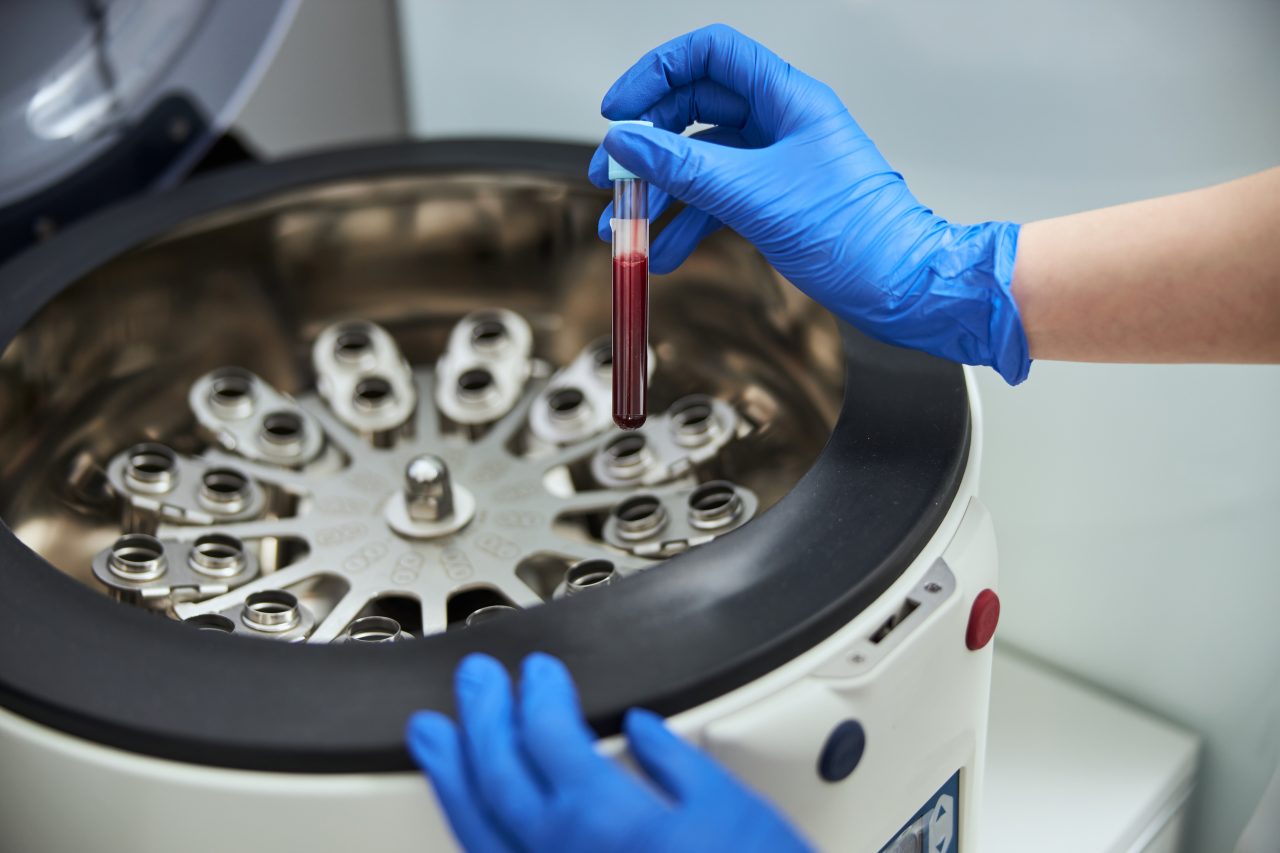Centrifugation is a process that is carried out in most laboratories and that allows the separation of mixtures made up of solid and liquid elements of different densities, exposing them to a rotating force in equipment called a centrifuge. Using this equipment, plasma can be separated from blood, as well as platelets, intracellular organelles and DNA. This process pushes the densest elements in the sample away from the center of rotation, while the least dense remain in the center.
This separation technique is used to isolate or concentrate suspended particles in a liquid, taking advantage of the different displacement speeds depending on their shape, size or weight when subjected to a centrifugal force. Centrifugal force is the force exerted on a body when it rotates around an axis. Centrifugal force can accelerate the sedimentation process of particles that tend to do so spontaneously (density higher than liquid), or those that tend to float (density lower than liquid).
Types of centrifugation to separate samples
Depending on the components of the solution, the centrifuge must be used at different speeds, with different models depending on the use that is necessary. There are different types of centrifugation for the objective that is needed:
- Differential: It is used as the first process for the separation of molecules. Here particles of similar densities settle together, taking advantage of the differences in sedimentation rate of the sample molecules.
- Isopícnica: In this method, particles that share the same sedimentation coefficient can be separated, adding media of different density to them.
- Zonal: Before carrying out this process, the sample is positioned on a preformed density gradient, which sifts the particles when subjected to centrifugal force.
- Ultracentrifugation: Widely used for the study of subcellular structures. As this process sediments the structures with fixed rotor or swing systems, these can be monitored using ultraviolet light or interferometers.
How to separate the elements of the blood using a centrifuge?
One of the most analyzed biological fluids in laboratories is blood, which has four main components: white blood cells, red blood cells, platelets, and blood plasma. This diversity of content in the blood makes it a very particular element when subjected to the laboratory centrifuge, since the cells present in the plasma have different characteristics from each other, therefore, the way in which they separate also changes.
In the process called separation by sedimentation, by establishing the perfect combination of centrifugal force and time, platelets can be separated from red and white blood cells, since they are smaller. But if the blood is not subjected to the centrifugal force for long enough, it will only be possible to separate the plasma, which will remain at the top and will also be rich in platelets. In the supernatant there will be small, fairly pure particles, but if a larger quantity of these particles is desired, centrifugation should be carried out at various speeds and times, which is known as differential centrifugation.
At Kalstein we are MANUFACTURERS of the highest quality laboratory equipment, and we offer you an excellent range of centrifuges at the best PRICES on the market. So we invite you to take a look at the HERE

